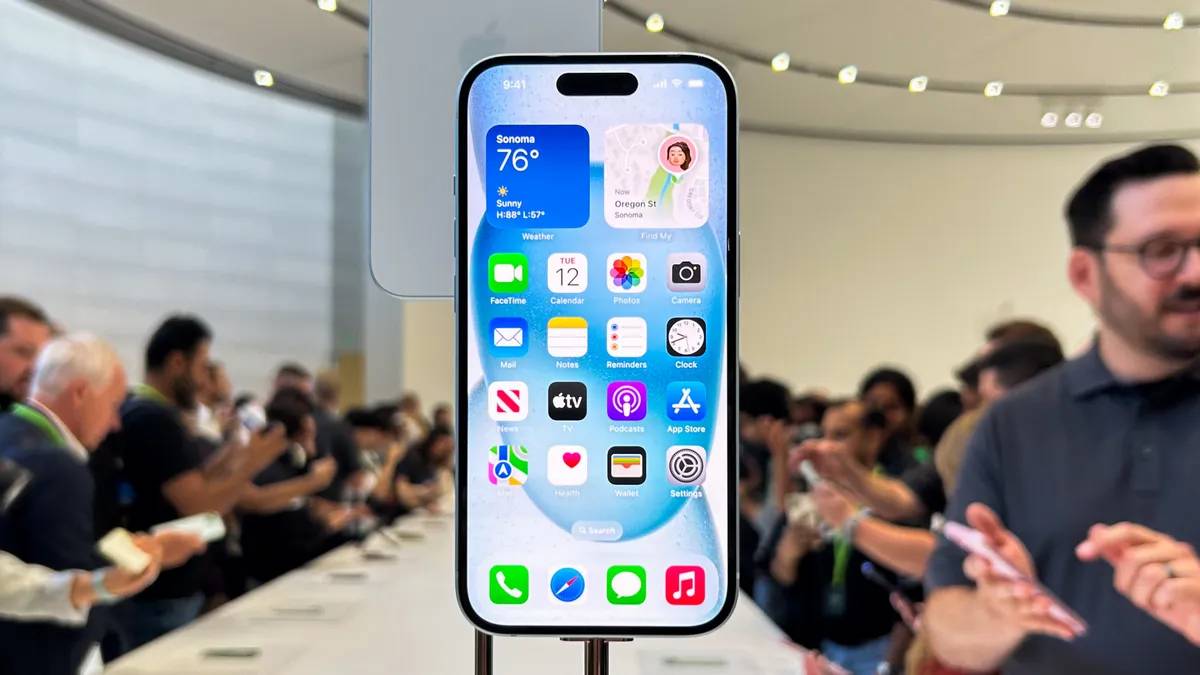The new titanium design of the iPhone 15 Pro and 15 Pro Max, along with a USB-C port for quicker data transfers and universal charging, a more potent processor, and a brand-new shortcut button, are all features of these models.
While there are undoubtedly camera improvements, like as the 5x optical zoom on the Pro Max, these aforementioned modifications appeared to receive the most attention during Apple’s event on September 12. That’s noteworthy because it implies that Apple is no longer solely focusing its iPhone Pro on only camera lovers.
The new 48-megapixel camera, along with the Dynamic Island, was one of the iPhone 14 Pro’s most notable features last year, but this year things are different. The same was true for the iPhone 13 Pro in 2021, which ranked better image stabilization, night mode portraits, and macro photography as its key selling points.
Apple’s decisions surrounding the iPhone 15 Pro are crucial since they might hint at what the iPhone’s future holds and what the iPhone 16 and subsequent models might look like. Previously exclusive to Apple’s most costly iPhones, features like Face ID and the Dynamic Island are now commonplace on less priced iPhone models.
For those who seek a better camera and additional internal storage, the iPhone 15 Pro is more than just an expensive model. It’s a declaration about the direction Apple wants its smartphone line to take in the future.
Apple’s history of bringing ‘pro’ features to cheaper phones

Apple’s Pro smartphones cost more than conventional iPhones, thus they have added functionality not found on regular iPhones. A telephoto lens, a design composed of more high-end materials, a display that can show the time and other information even when the screen is off, and a smoother refresh rate are some of these improvements. But over time, some components have made their way into less expensive phones.
Consider the 2016 iPhone 7 Plus as an illustration. Two rear cameras on a smartphone were still a unique concept back then. But as of right today, every iPhone has a dual camera configuration aside from the iPhone SE. Apple used to reserve OLED screens, which provide superior contrast than LCD displays, for its most expensive smartphones. But beginning with the iPhone 12 family, Apple also made them a part of its array of flagship phones.
The iPhone X is the most notable instance in recent memory of Apple adopting a distinguishing feature from its high-end phone and making it standard across all of its products. The first iPhone to start at $1,000 was the model from 2017, which put a strong entrance barrier in place. However, that cost came with other adjustments, signaling a turning moment for Apple’s smartphone. Edge-to-edge screens were added, the home button was removed, and Face ID became the new method of unlocking your phone without entering a passcode.
Since then, all new iPhones have received similar features with the exception of the iPhone SE, demonstrating how Apple’s high-end phones may be a sign of things to come. With the introduction of the Dynamic Island in the iPhone 14 Pro, which is now a feature of the whole iPhone 15 lineup, Apple extended this tradition. Since the ordinary iPhone 15 features the Dynamic Island, a 48-megapixel camera, and the same A16 Bionic chip as the iPhone 14 Pro from a year ago, it actually seems like a scaled-down version of that device.
Where the iPhone could be heading next

It’s hard to foresee what the iPhone will do in the future. But Apple’s choices for the iPhone 14 Pro and iPhone 15 Pro may offer some insight.
The addition of the Dynamic Island in 2022 on the iPhone 14 Pro and new features like the action button on the iPhone 15 Pro hint that the iPhone Pro is no longer merely a high-end camera phone. It’s also for so-called “power users” who hanker after novel methods to customize their gadgets with unique shortcuts and desire a device that stands out from the competition in terms of appearance and feel. The camera, voice memo recording, and flashlight, for instance, can all be readily accessed with the action button.
You could counter that the iPhone Pro was always intended for that market, earning the “pro” moniker and a higher price. Even said, other advancements have been mostly eclipsed by the Pro’s camera improvements. The iPhone 15 Pro signals the beginning of a time when the iPhone Pro will be distinguished by features other than its camera.
And that’s intriguing since, in prior years, new phones have felt uninteresting. Despite advancements in camera and processing technology, these objects continue to be slabs of glass and metal that are packed with cameras and sensors. It’s possible that the iPhone 15 Pro won’t alter that, but it does offer some insight into Apple’s vision for the future of the smartphone.


Comments are closed.